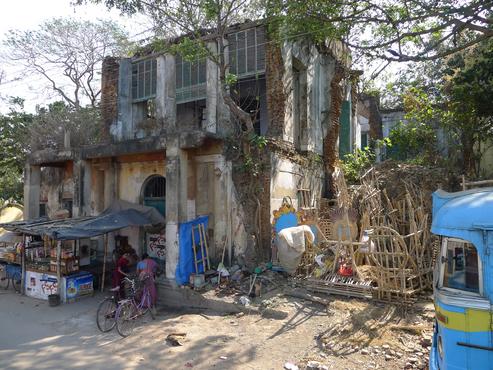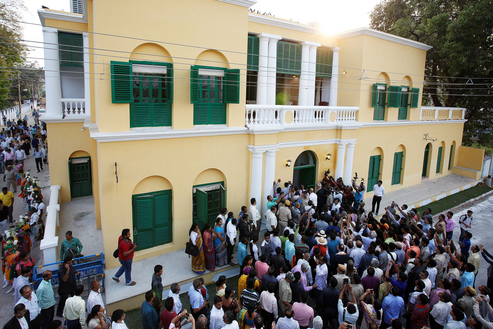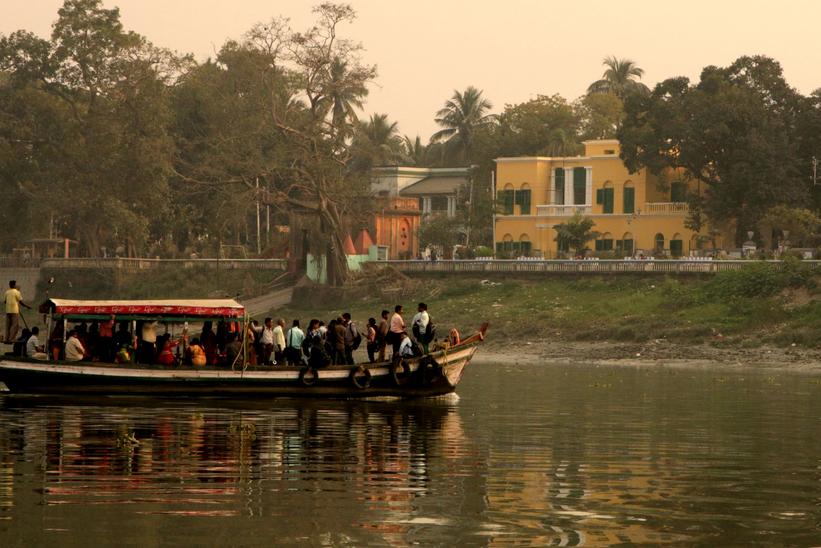The Denmark Tavern & Hotel

Down by the river in Serampore there was a large ruin. The city’s inhabitants no longer remembered the name of the house or its history, but you could tell that it had once been a stately building. Now, however, two solitary pillars were all that remained of the house’s façade. The rest of the main building had collapsed and was overgrown with trees and lianas. The building was located next to the old landing place where the Danes had their flagstaff, canons and warehouse. The team from the National Museum of Denmark set to work scrutinizing the archives and museums in Denmark and India in search of information and old paintings of the house. After thorough investigation, they discovered that it was the ruin of the once renowned Denmark Tavern and Hotel, built in the late 1800’s.
A Place for Gentlemen to Meet

The Englishman Mr. Parr opened his new tavern around 1786. A local advertisement declared that it was an elegant and comfortable establishment where “Gentlemen passing up and down the river may be accommodated with breakfast, dinner, supper, and lodging.” For a European gentleman who wished to get away from the bustling city of Calcutta or some distant Indian trading post further up the river, the tavern offered everything he could possibly desire: There was wine and liquor, a coffee parlour with papers and a fine billiard table where one could relax with fellow European friends and business relations. In the early evening when the weather was not too hot, European ladies and gentlemen would dress up and go for a stroll along the river, while the Indian merchants and landowners, all dressed in white cotton, would sit around chatting in groups.
A Modern Café for Everyone

We do not know when the tavern closed. The police had long used the building as residence but had relocated to a new back building when it fell into disrepair. Now, the house has been reconstructed, and The Denmark Tavern is once again used as a café, restaurant and hotel. Today, the tavern is no longer a place reserved for Europeans. Every day, the tavern fills up with Indian guests from Serampore, Kolkata and the neighbouring cities, who come to experience the historical atmosphere of the house. On the menu you will find both cappuccino, Darjeeling tea and Indian curries. One can also enjoy a Danish roast and Danish pastry. Tourists can rent a room and take part in the local café life, and with the police still residing in the back building, the house now encompasses its entire history.
Restoration of The Denmark Tavern
Realdania has financed the restoration of the building itself (approx. 336,000 £), while the State Government of West Bengal has paid for all interior decoration and electrical installations (approx. 112,000 £).
Running the Café
The house is owned by the State Government of West Bengal and run by Park Group, a well-known Indian hotel chain.
Link to The Denmark Tavern’s Facebook.
The National Museum of Denmark’s other Collaborative Partners
West Bengal Heritage Commission
Indian National Trust for Art and Cultural Heritage (INTACH)
Architects
Manish Chakraborti M/s Continuity, Kolkata
Flemming Aalund, Raadvad Architects (The National Museum’s advisor)
Videoes about Denmark Tavern
Video about the first day of the restoration project here.
Video about the restoration project.
Video from the reopening in 2018.